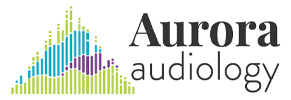
There are three types of individuals out there: those who are very interested and fascinated by history, those whose eyes gloss over and they start to fall asleep when history is discussed, and people who believe that aliens are responsible for history.
Aliens aren’t behind the history of hearing aids. But it’s most likely a lot weirder than you might think. After all, hearing loss isn’t exactly a new thing; it’s been around as long as we have. Because of this, people have been uncovering clever ways to cope with hearing loss for centuries, if not longer.
Knowing the history of your hearing aids can give you a deeper appreciation of how your own tiny, digital devices work, and why you should use them more frequently.
For thousands of years, people have been dealing with hearing loss
Evidence of hearing loss going back to the very beginning of human existence has been discovered by archaeologists. Fossil evidence reveals indicators of ear pathologies. It’s kind of amazing! Mentions of hearing loss also start appearing as soon as written language is created (for example, there are many Egyptian sources that mention hearing loss symptoms).
Obviously, hearing loss isn’t new. And it wasn’t any better then than it is now (this is especially true because it was more difficult to manage then). Communication will be a lot harder if you have untreated hearing loss. Friends and family members may become more distant. When humans were a bit more primitive, neglected hearing loss could result in a shorter lifespan as they might not have been capable of detecting danger.
So going back thousands of years, humans have had an incentive to learn how to manage hearing loss. And they’ve even managed some very good successes!
The progression of hearing aid like devices
The first thing to know is that our history of hearing aids isn’t exhaustive. Not all evidence of hearing devices is recorded through time. Even if we don’t have a written record of precisely what ancient people did to alleviate hearing loss, it’s very likely that they took steps in that direction.
But here’s what we do know about the known hearing aid timeline:
- 1200s: Animal Horns: Hollowed out animal horns were used as some of the first proto-hearing aids. People most likely used this device to amplify sound and reduce the impact of hearing loss and evidence of this sort of device dates back to the 1200s. The idea was that the funnel-shape of a hollowed out animal bone would help conduct sound more directly into the ear. Clearly, this device isn’t working like a modern hearing aid because there’s no amplification. But they probably help focus the sound you want to hear and control distracting outside sounds.
- 1600s: Ear Trumpet: The “cone shaped” hearing aid was the prevalent format for hundreds of years. And that continued into the seventeenth century, when “ear trumpets” became a desirable means of managing hearing loss. They were called “ear trumpets” because, well, that’s what they looked like. The small end would go in your ear. You could find them made out of a wide array of materials (and with a startling range of shapes). At first, they were large and burdensome. Eventually, clever individuals created smaller, more collapsible models of these ear trumpets, so people could bring them on the go. Since there was still no amplification, they were about as effective as the bigger versions. But they could channel sounds into your ear, and direct sound more intentionally toward you.
- 1900s: Electronic Amplification: In the late 1800s, the carbon microphone was developed but wouldn’t be employed as hearing aid technology until early the 1900s. This should begin amplifying and make hearing aids a no-brainer for effectiveness, right? Well, not so much. In the early 1900s, these devices were huge, and not really wearable. The technology would need quite a bit of refinement before it would be very useful.
- 1920s: Wearable Hearing Devices: Then came vacuum tubes! At one time, believe it or not, those vacuum tubes that energized those bulky television sets were state-of-the art technology. These vacuum tubes permitted (relatively) smaller, wearable hearing aids to be made, the size of a backpack. Slightly clearer sound and improved amplification were also possible.
- 1940s: Pocket-Sized Hearing Aids: From fitting a hearing aid in a backpack to being able to put one in your pocket or purse, it’s a significant leap! This was the result of the development of the transistor, which meant you required less technological bulk to achieve the same effect. It became a huge advantage, as a result of this technology, to take your hearing aid with you wherever you went.
- 1970s and 1980s: Hearing Aids Get Smaller: Hearing aids got smaller as technology improved. The 1970s and 80s, in particular, saw a considerable reduction in the size of hearing aids. This made them simpler to use, and more popular. Sadly, the actual amplification was still rather basic. They just increased the volume of all of the sound they picked up. It was better than nothing, but still not really what most people needed to effectively treat their hearing loss.
- 1982: Digital Hearing Aid: The first digital hearing aid was unveiled in 1982, though it wasn’t commercially available until 1996. Digital hearing aids changed the hearing aid landscape by making everything smaller and more discrete while offering personalized amplification and clearer sound quality. With the advent of digital hearing aids, treatment for hearing loss became much more robust and successful.
- 2000s (and Beyond): Hearing Aids Get Wireless and Smart: Since the introduction of the digital hearing aid, manufacturers have been able to cram more and more technology into these tiny devices. Wireless, Bluetooth technology came first. And today, modern hearing aids will use machine learning algorithms to help you hear better than ever. This integration with other technologies makes hearing aids more efficient, and more convenient!
History’s most advanced hearing aids
For centuries or more, humans have been working on managing hearing loss.
Modern hearing aids can accomplish that better than at any point in the history of humanity. These little pieces of technology are more prevalent than they ever have been because they’re so beneficial. A wide range of hearing problems can be managed.
So if you want to get back to connecting with your kids or your loved ones or the cashier at the supermarket, hearing aids can help you do it. (See? No aliens involved.)
Discover how hearing aids can improve your life. Contact us for an appointment.
Call Today to Set Up an Appointment
References
https://hearinghealthfoundation.org/blogs/hearing-aid-history-ear-trumpets-european-royalty-earbuds
https://www.hear-it.org/lighter-smaller-and-better

